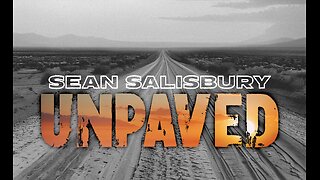Premium Only Content

NIKOLA GEORGIEV - STRANDZHANSKA GAIDA -BULGARIA
One of the first peoples to adopt this instrument were the Thracians. They replaced the horns with wood, and made other innovations, such as the trumpet and the bellows. In ancient Egypt, bagpipes were also used - with and without a pipe.
At the beginning of the first millennium BC, the proto-Bulgarians adopted this instrument, and it became one of the main musical instruments in the lands of Old (Volga) Bulgaria. Peoples such as: Celts, Druids, Russians, and others also took this instrument from them. In more recent times, the bagpipe was brought to the territory of today's Bulgaria. The modern Bulgarian bagpipe is an instrument At the moment, 2 main schools of juries are advocated - bagpipes, - Thracian (Asia Minor) and Strandzha. There are also juries - couplets, based on the chorus, similar to the couplet. The Kaba bagpipe is unique in its sound, an autarchic instrument, used mainly in the Rhodope Mountains, as an accompaniment to the famous Rhodope songs, based on the pentatonic scale. But it also fits in successfully when combined with other instruments, as a support for dance motifs, etc. It is characterized by a powerful and dense sound, low in range, but otherwise soft and caressing the ear.with many possibilities, both in an orchestra and independently, in ritual rituals, etc. Currently, two main types are imposed - kaba and dzura. The dzura bagpipe is mainly a solo instrument, characteristic of almost the whole of Bulgaria, and it is most prevalent in Strandzha. It has a high timbre of sound, loud, at times shrill, with possibilities for various curves and ornaments (melisms). Like the kaba - the bagpipe, the jura can be successfully included in instrumental motifs, symphonic poems, jazz, rock and roll, etc.
-
 1:17:27
1:17:27
Awaken With JP
12 hours agoThe Current Thing: Tesla Protesting - LIES Ep 82
155K75 -
 1:07:08
1:07:08
Sean Unpaved
9 hours agoNFL Free Agency Rolls On! MLB Spring Training Heats Up along with 3x World Series Champ Dave Stewart
92.8K3 -
 2:10:15
2:10:15
Right Side Broadcasting Network
14 hours agoLIVE REPLAY: White House Press Secretary Karoline Leavitt Holds Press Briefing - 3/11/25
178K44 -
 2:06:00
2:06:00
The Quartering
13 hours agoTrump Goes NUCLEAR On Canada, Blasts Massie, Harry Potter Race Swap, Man Humiliated On TV Show
128K69 -
 1:03:09
1:03:09
The White House
12 hours agoPress Secretary Karoline Leavitt Briefs Members of the Media, Mar. 11, 2025
121K72 -
 1:07:03
1:07:03
Winston Marshall
11 hours agoEXCLUSIVE : Oliver Anthony On Life After ‘Rich Men’, The Christian Counter Culture and The Elites
80.8K13 -
 1:44:47
1:44:47
Russell Brand
13 hours agoDigital Censorship & Political Warfare: X Attacked, Rand Paul Rebels, Free Speech on Trial – SF551
176K28 -
 LIVE
LIVE
tastylive
12 hours agoLIVE Stocks, Options & Futures Trading with the Pros! (Market Open -> Close & More) March 11th, 2025
101 watching -
 1:35:59
1:35:59
Simply Bitcoin
13 hours ago $4.50 earnedTrumps Bitcoin Embrace TERRIFIES The EU | EP 1200
64.3K8 -
 2:00:05
2:00:05
The Charlie Kirk Show
12 hours agoThe Left Regroups + Deporting Hamas Lovers + Love Is Blind? | Rep. Donalds, Dr. Arnn | 3.11.25
146K39